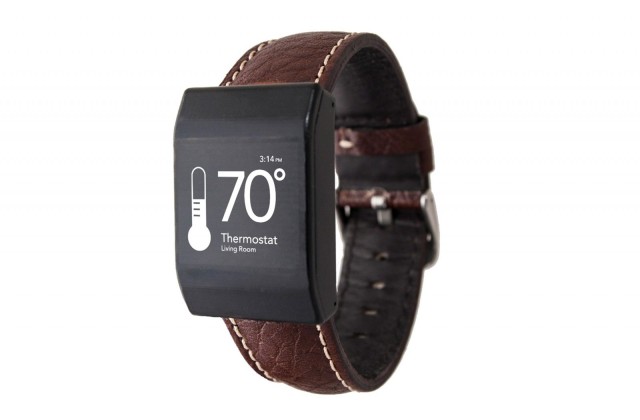This is the year computer power migrates to our wrists. We have the roll-out hype of the Apple Watch to thank for that. But one company wants that power to be flexed through a flick of the wrist.
Reemo is software and a wrist device you probably haven’t heard of. It doesn’t come in gold or send your heartbeat to a loved one.
It is built around the emerging technology of gesture control — users become maestros in their homes and offices. With a range of gestures and arm movements, users can control the volume on televisions and stereos, trigger door looks, drop the temperature of a room and power lighting up or down.

“We are designed to be a controller of the internet of things,” said Al Baker, co-founder and CEO of the Minneapolis-based company. “It’s early in the field so I don’t expect we’ll bring the masses anytime soon but when you consider the number of devices that will be in the home over the next 10 years, that tells me there can’t be any limitations.”
Reemo is part of the growing smart-home economy, which is expected to be a $22.4 billion industry by 2020, according to internet statistics company Statista Inc. More than two-thirds of consumers plan to buy connected technology for their homes by then and nearly half say they will adopt some form of wearable technology, according to an internet of things study conducted by the Acquity Group last year.
Apple’s HomeKit, an iOS framework that lets users control connected devices and home appliances, should boost adoption of smart-home accessories once everyone can use Siri to dim the lights or cue up iTunes dinner music. The Apple Watch will be a factor as well.
The Reemo wrist device – yes, it has a watch face and can also be used as a health tracker – works in conjunction with tiny puck-like receivers in the home that pull control codes and updates from the internet for various devices, everything from home security, thermostats, televisions and appliances like coffeemakers.
A Reemo watch and three receivers costs around $300 and will start shipping sometime this summer.
Reemo also provides software that brings gesture control and gesture recognition to products made by smart-home companies like Nest, SmartThings, Logitech and iControl. Although Reemo has its own watch, Baker said the company is willing to open up its engine for other smartwatch manufacturers.
“So much is wireless, you don’t have to build it into the home like we traditionally thought,” said Jason Domangue, vice president of ecosystem development at iControl, which develops platforms that unite data, applications and in-home devices via a cloud-based infrastructure. “Everything has the potential to be equipped with smart sensors, even air vents. Who would’ve thought? Not one area is not impacted.”

Think of the number of individual apps you would have to carry on your phone or tablet to activate the various smart items in the home. One Reemo app lets you assign devices and home functions to the receivers.
Gestures can be customized. In one of Reemo’s instructional videos, an actor points at a coffeemaker, turns his palm up and motions his fingers in. The coffee starts brewing.
The 2002 futuristic crime thriller Minority Report hinted at gesture technology. Some of the movie’s opening scenes involve Tom Cruise accessing data on a large computer with a gestural interface.
Gesture tech brings us closer to that more-animated future. Instead of pressing buttons, we’ll be working our devices like a traffic cop works cars passing through an intersection.
https://youtu.be/P_v0iPbKMdY
https://youtu.be/OTmP-epZ7-Q


